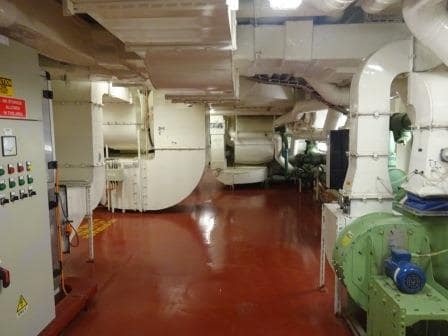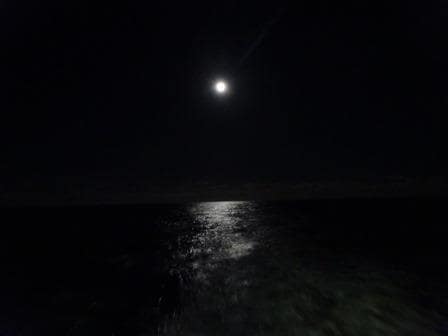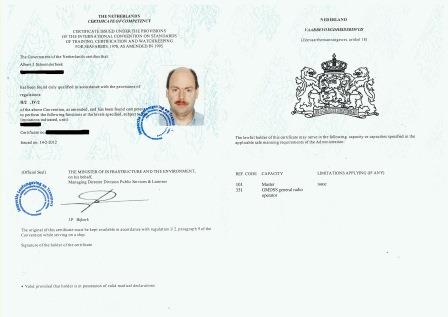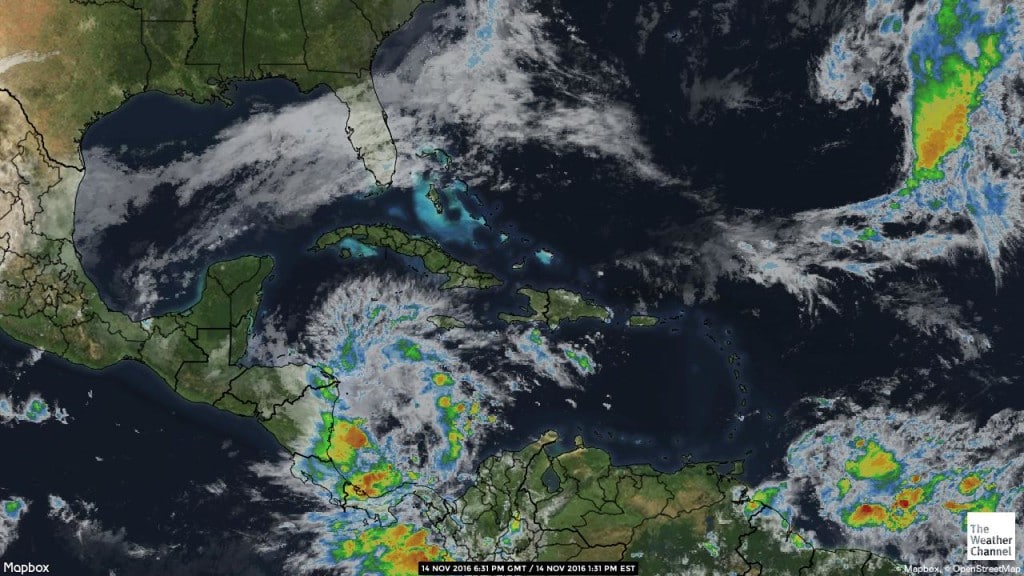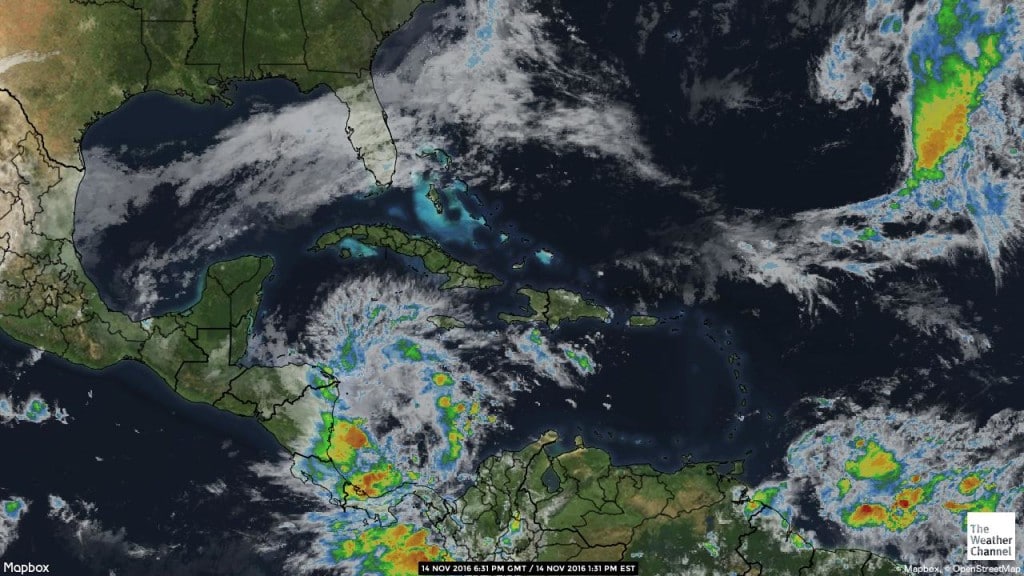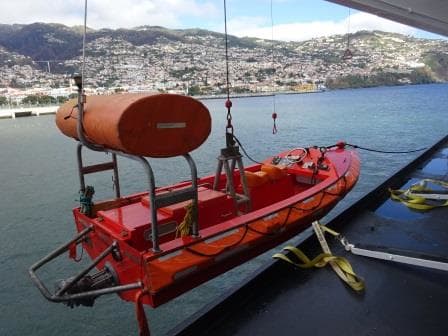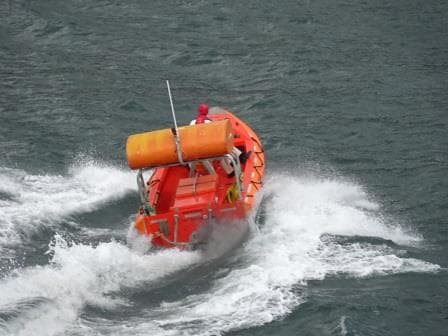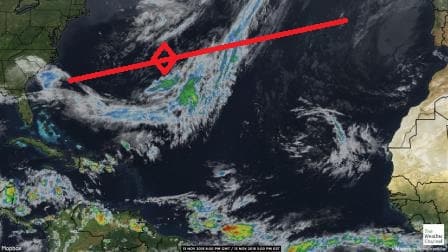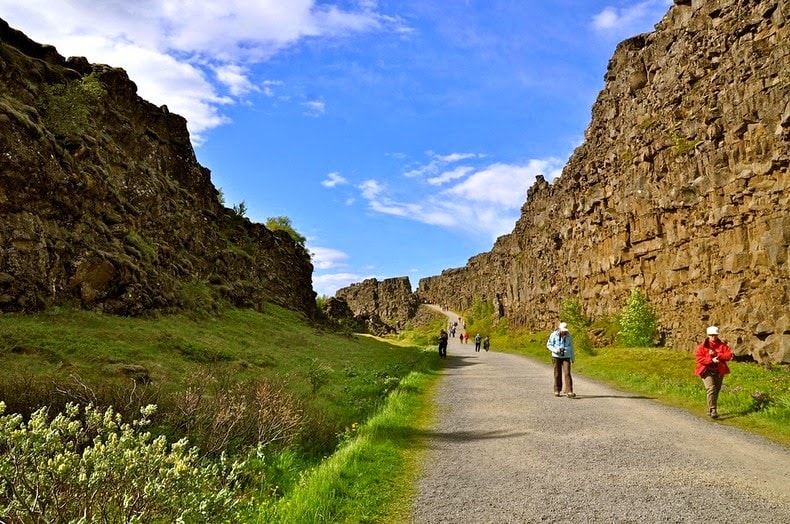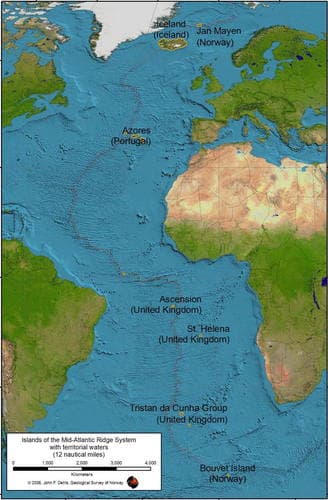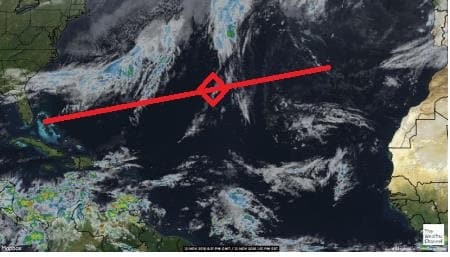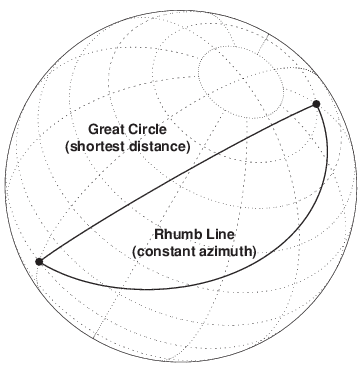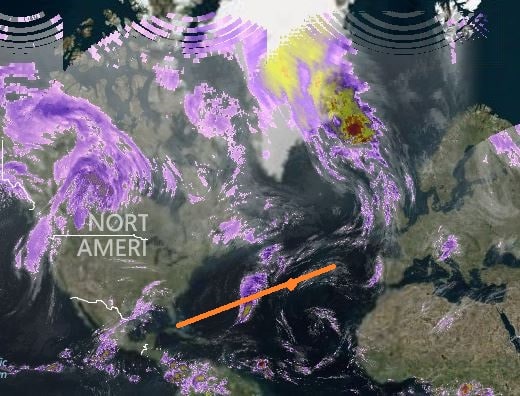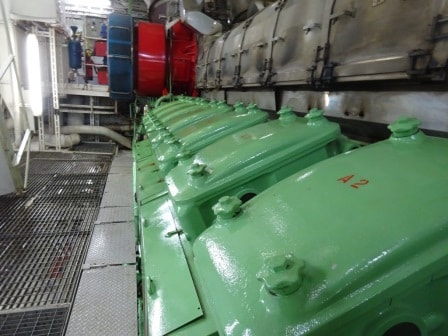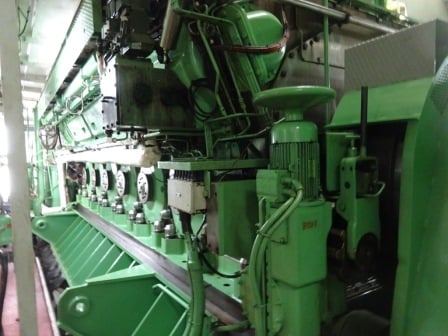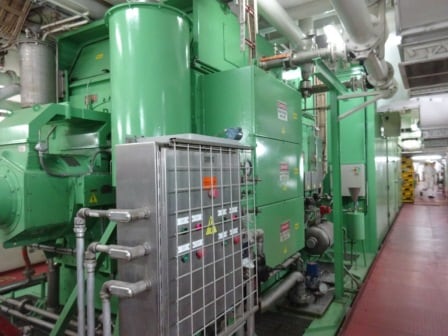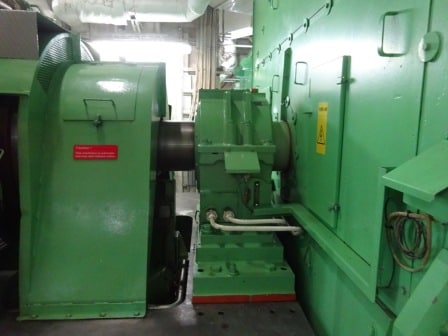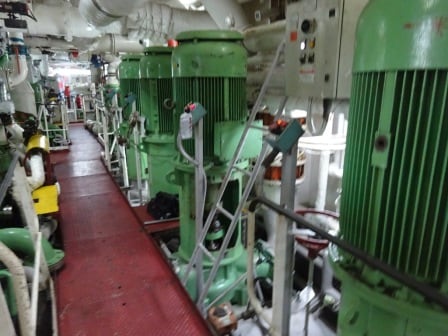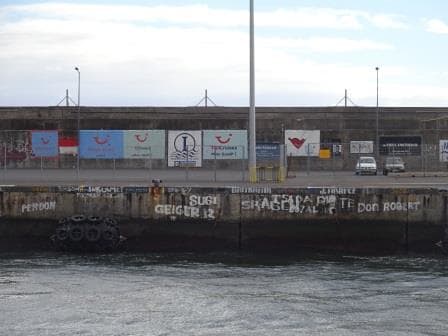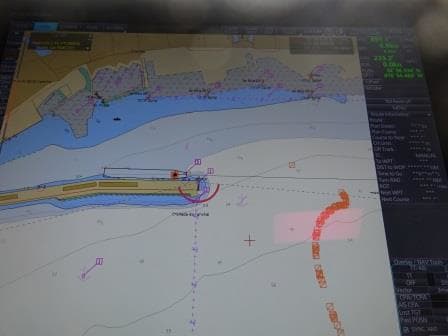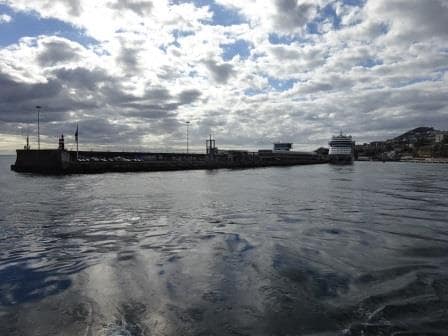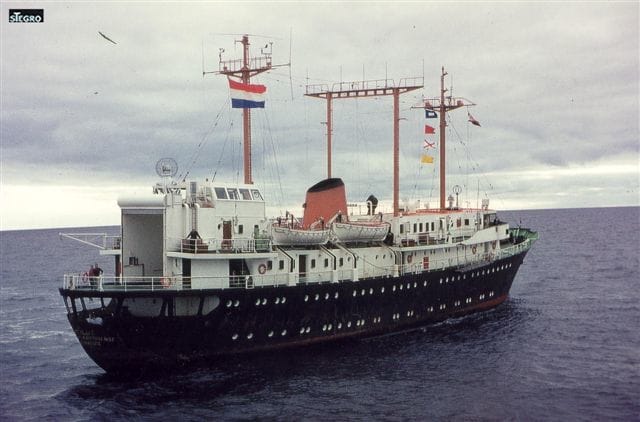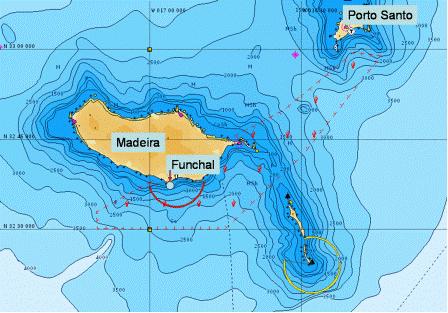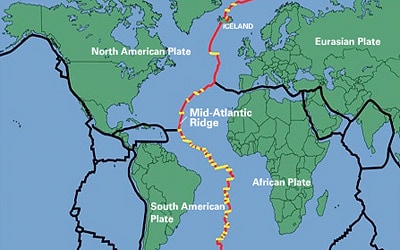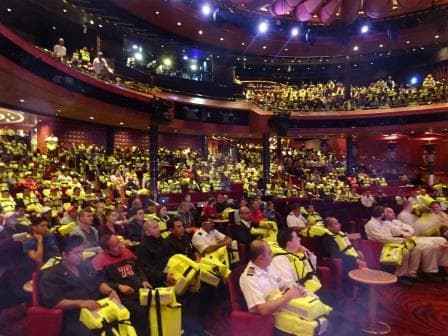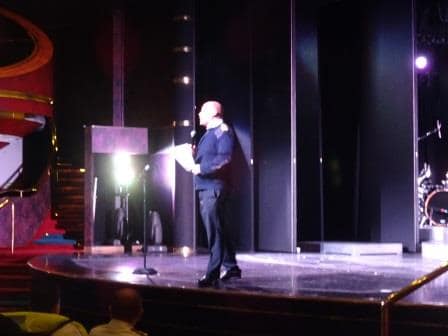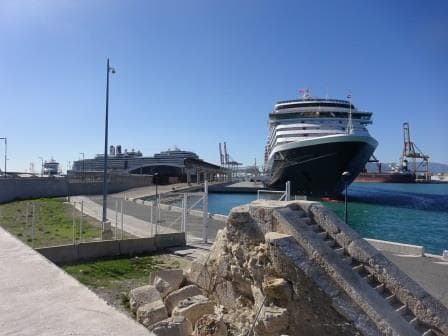They always say the sting is in the tail and so it was today. After six days of an extraordinary quiet North Atlantic we had a wobbly day today. There was more rain and wind in the weather system that lays over Florida and stretches out to Bermuda and the wind whipped up the waves. So the ms Oosterdam is moving a bit on the waves and on the outside decks, especially on the portside it is a bit windy. It started this morning around 08.30 when we sailed into centre of the frontal system but by mid afternoon we were out of it and the sun was shining brightly again.
By that time we will also be entering the Bahamian Islands area and sail through North Providence Channel located between Nassau (to the South /portside) and Freeport (to the North / Starboardside). That will take us until tomorrow morning and then we will be in the Straits of Florida. We are crossing the Straits under an 45o angle so we cut quickly through the Gulf Stream, which is not our friend this time, and then near Miami we should end up under the coast. By hugging the coast the aim is then to avoid the axis of the Gulf Stream and even hope for a bit of counter current caused by water which flows back. A natural thing as otherwise there would be holes in the Straits of Florida as the 4 mile current would take all the water with it.
The NOAA gives daily advise about the approx. location of the west wall of the Gulf Stream, then the axis is another 4 to 6 miles or so to the East of it, at least in the area of Key West. When the Gulf Streams curves to the North following the Florida coast it comes much closer to land. So we know that whatever luck we have, we will get a certain amount of current against us, until we are past the curve in the coast south of Miami. Hopefully the stretch to Key west and the Dry Tortugas will then bring some counter current.
Today I carried out an inspection on Deck 1, the lowest guest deck and met a guest who was quite intrigued into what was hiding behind the doors I was opening and closing. So I showed him the entrance to our largest Fan Room on board, which runs from the Forward Guest staircase to nearly the middle staircase all the way. Here there are hardly any inside cabins, all is taken over by Space for the air conditioning and ventilation. Then they run up three decks as well, so there is this s large engineering space right inbetween the guests cabins where hardly anybody has any idea about. I simply did not realize the significance of this but if you do not know the lay out of a ship very well, or the basic construction features of a modern cruise ship, then you have no idea about the vast spaces given over to the ships operation outside the Engine Room itself.
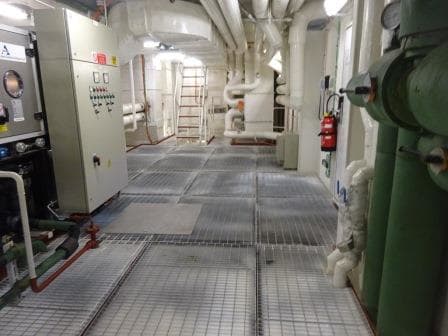
And this the next deck up. And then you can go another deck up. Here the floor is made of gratings which can be taken away if major maintenance has to be carried out.
In the old days, the much less sophisticated Air conditioning systems were smaller units spread all over the ship. Now centralization has taken over which results in less space needed while still being able to get the output needed. The amount needed is calculated when a ship is designed and then approved by the regulating authorities. Sometimes that calculation is a little bit on the generous side and then when a 2nd ship is constructed of the same design, the tinkering starts. “We now have room here for an extra cabin, or we can put a locker there, or make the walk way a bit wider” and that is also one of the reasons why ships in the same class are seldom exactly identical. There is in the interior – read operational – layout between the Zuiderdam , first of the Vista Class and the Noordam, last of the Vista Class, quite a bit of difference.
So tomorrow we battle against the Gulf Stream while keeping an eye on the activities in the South Carribean. For the time being it is still static there, no change from yesterday, and will not affect the weather in Tamp for our coming call.
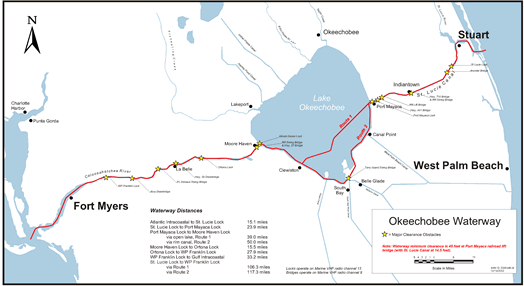
The Okeechobee Waterway, cutting up Florida in a northern and a southern part. It takes a good 15 hrs. to transit at least if you want to do it in one go. I wonder if they have pubs along the route as we have in England and Holland.
Then a correction from my side, I mentioned yesterday that there was no canal to help us get to Tampa without sailing around Florida. One of your good readers pointed out, there IS a canal. It is just no big enough for large ships. It is called the Okeechobee Waterway and runs roughly from 80 miles South of Cape Canaveral to 77 NM South of the entrance to Tampa Bay. Maybe it would be something for Carnival Corporation to adapt the Canal to our needs. Although it would mean the upgrade of a lot of bridges and rebuilding of quite a few locks as Lake Okeechobee is fresh water. A sort of mini Panama Canal so to speak.
